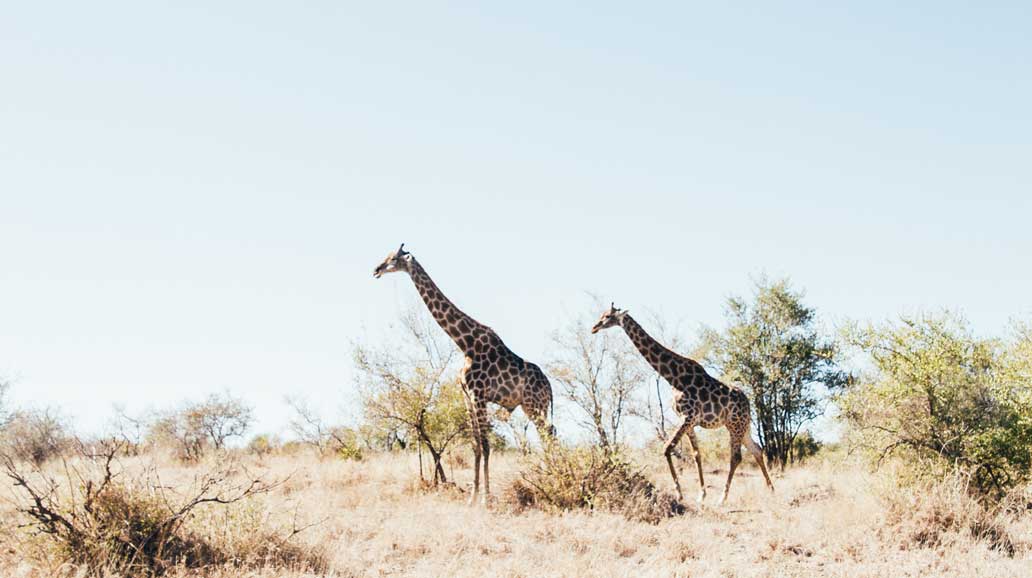Safari and style? Not often two words that go together for the practical necessities required to enjoy a safari can prove an impediment to following fashion trends. The safari has moved on, however – it’s no longer catering to yellow suited and booted game hunters, but has now adapted for a range of tastes from nature loving wine enthusiasts to those who want a safari experience from the air. As a result, whilst there are some practicals which are a must, a tourist’s usual style can also be incorporated into their safari wardrobe.
Adapt Your Current Wardrobe
Going on safari isn’t a reason for the tourist to drop their sense of style. Yes, some pieces will be impractical but before rushing out to buy a new outfit the safari-goer should check their wardrobe to see which fashion pieces suited to age and style will likely be appropriate for the safari conditions but can be worn to other events on the holiday as well. Long-sleeved tops are a must, as they will help protect from insect bites and can be accessorized to make them more or less formal. Earth-toned colours work better than brights as it’s less likely muted tones will be spotted by wildlife and cause them to startle. Layers are also important as even during the hotter times of the year, early starts can be chilly.
Footwear – Fashionable but not Fancy
Of course, if undertaking a classic trekking safari, footwear has to err on the side of the practical, with walking boots proving to be a favourite. However, for those less fond of walking, the self-drive or driven tour safari can allow some flexibility with footwear. Of course, stilettos are not a good idea, but some more protective styles of sandal or casual shoe could serve the safari fashionista well.
Keep a Cool Head
Wide-brimmed hats not only keep the sun out of the eyes, the right one lends a touch of style to a coordinating outfit. A classic fedora or straw hat does the job well, and a pair of UV protective sunglasses will also keep eyes well shaded.
Important Tools
Depending on the safari excursion you choose, you may need to consider bringing certain tools to ensure that your escapade is safe. You shouldn’t forget that you will essentially be up-close and personal with a range of wild animals on your safari. Being prepared by packing a few helpful tools will ensure that you are able to handle any situation that you may encounter—and that you can enjoy the experience to the fullest.
One of the tools you may wish to consider bringing on your safari is a pocketknife. There are many sizes and styles of Swiss army knives, depending on your budget. Now, in most cases, you won’t need to use your pocketknife at all, but it can’t hurt to bring one in your checked luggage (obviously, flights will not allow a knife to be carried onto a plane.) Having a pocketknife may allow you to feel safer in the wild, and it can be used for practical reasons, like opening cans of food if you are camping.
Purchasing a pair of good binoculars that are easily stored is essential and will give you the opportunity to get a much better look at the animals. Generally, most of the animals on a Cape Town safari will remain at a distance, so binoculars are necessary if you are really hoping to study the animals’ features.
Electronics
Make sure to bring some high-end or quality camera equipment. Most people will only come prepared with their camera phones to a safari, but the truth is, having a professional-style camera with a wider lens for photographing landscapes will greatly enhance your picture taking. Make sure to take along enough batteries and a memory card with plenty of storage. Adapters and extra chargers should be packed, too.
You should consider bringing along a small battery-powered flashlight. In this realm, a headlamp or head-torch can also be useful in lieu of a flashlight for any nighttime treks. A handheld GPS with built-in map features or tracking features may also be useful on your safari.
Other Must-Haves
Sunscreen obviously is essential, preferably with an insect repellent element, for both the face and body. To snap those memories a camera and charging equipment would be handy, preferably in a protective case to prevent dust, heat or rain damage.
Going on safari is for many people a once in a lifetime opportunity so the traveller would be well advised to prepare well for this in terms of equipment, but it’s not necessary to assume a whole new style. If the trip is well researched it should be possible to limit buying to a few choice pieces which are essential and adapt the rest of the wardrobe accordingly.
